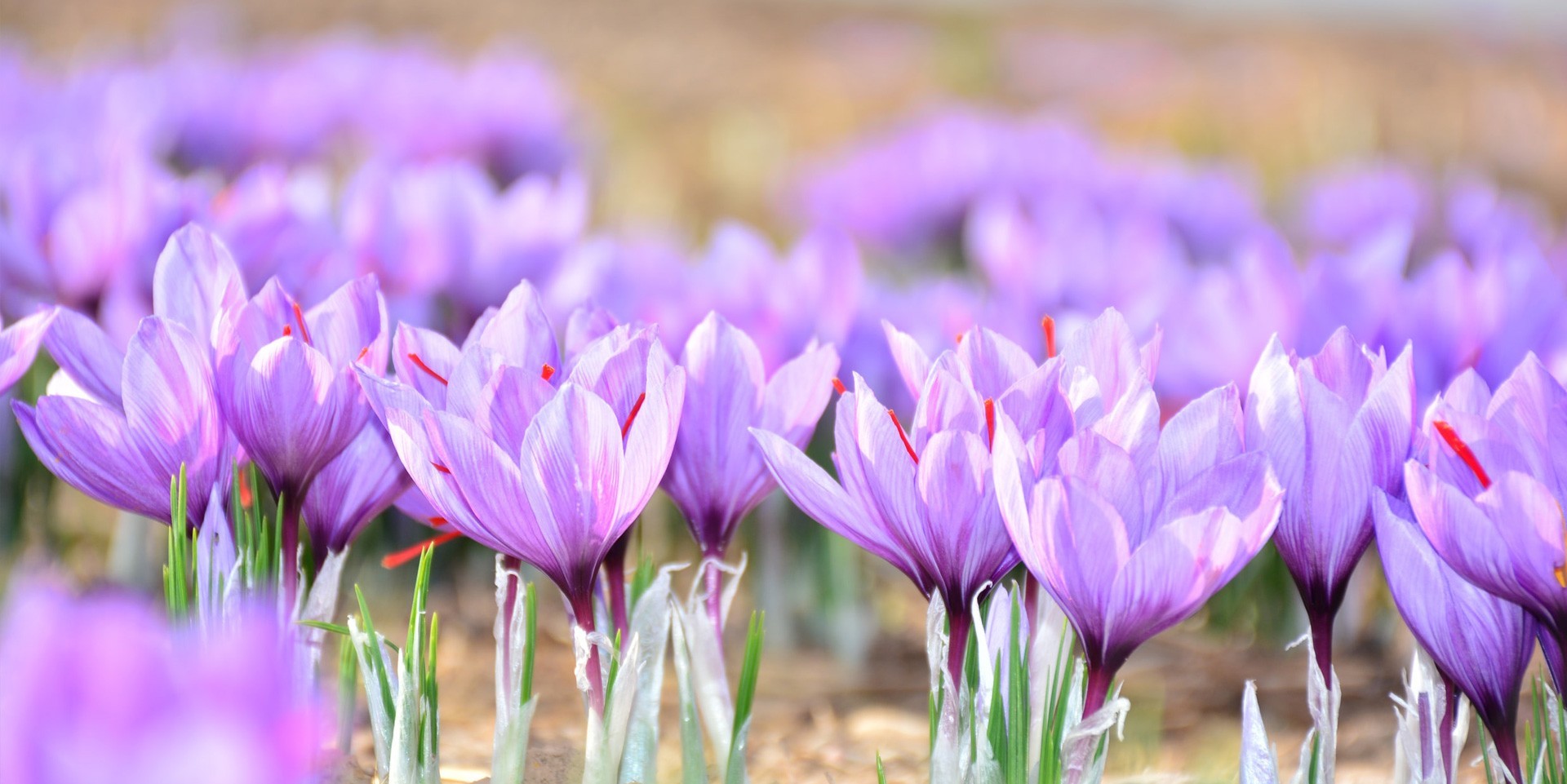Like many products grown from the earth, saffron has virtues that go far beyond the taste properties. It also has many values that benefit health and wellness. Saffron has been used for thousands of years by many civilizations as a remedy for various ailments. It has been, and continues to be, the subject of several clinical studies, including the treatment of mild Depression, Alzheimer’s, certain cancers and Multiple Sclerosis. Saffron appears in the Ebers Papyrus, which is the oldest known medical treatise, dating from 1550 BC, in which it is used for its medicinal properties, in the preparation of more than 30 remedies.
Known since ancient times for its aphrodisiac virtues where it was used as a sexual fortifier, saffron releases energy, joy and desire. In ancient times, the Phoenicians made saffron cakes to honor their Goddess of Love. They also dyed bedsheets with saffron on the wedding night of newly married couples to guarantee the newlyweds a long and fiery love.
Thanks to the action of the active agents, crocin and saffron, Saffron would also be a hypotensive, acting on the cardiovascular system. It contains more than 150 volatile compounds but is also very rich in beta-carotene and lycopene, two powerful antioxidants that fight free radicals, a source of aging.
By its effect on serotonin (the wellness hormone also involved in the regulation of appetite), Saffron helps to fight against weight gain. It promotes blood circulation, which stimulates the energy of the body in general and that of the digestive system in particular. It is a very effective natural appetite suppressant which increases the feeling of fullness significantly thereby helping to reduce cravings.
Chinese medicine uses saffron to soothe cramps, asthma attacks and to reduce bruising. Its use helps to slow the heart rate, lower blood pressure or stimulate breathing. Its use helps to mitigate the effects of alcohol.
In the East, the pain of infants when their first teeth arrive, is calmed by massaging babies’ painful gums with saffron and honey, as a natural antiseptic lotion. Saffron is also used to calm painful menstrual periods of young girls (in tea or hot milk).
Thanks to picrocrocin, which stimulates the stomach, strengthens gastric juice secretions and sanitizes the intestines, saffron facilitates the elimination of gases, limiting infighting. The Romans systematically used saffron to spice up their dishes in order to limit bloating and mitigate the effects of alcohol.
Saffron is one of the plants richest in riboflavin (vitamin B2), playing an important role in the transformation of simple foods into energy and involved in muscle repair metabolism. Saffron may be an effective and harmless treatment for migraine headaches. Indeed vitamin B2 could correct the malfunctions of the mitochondria that are the cause of migraines. There is also a very strong link between riboflavin and eye health. Added into the kohl, which blackened the eyes of many Eastern women, it helped to protect from wind and sand aggression while preventing eye infections by its medicinal properties.
Incorporated into beauty products, saffron naturally brings radiance and brightens the complexion, while its antioxidant properties give it a revitalizing anti-aging action. Saffron softens the skin and reduces dark circles. Cleopatra used Saffron to preserve the beauty of her skin, but she also made, with saffron, the first real toilette water, Kyphi. This fragrant oil was part of her seduction ritual.
The consumption of saffron is not recommended during pregnancy as it is considered a natural abortifacient and can cause uterine contractions.

